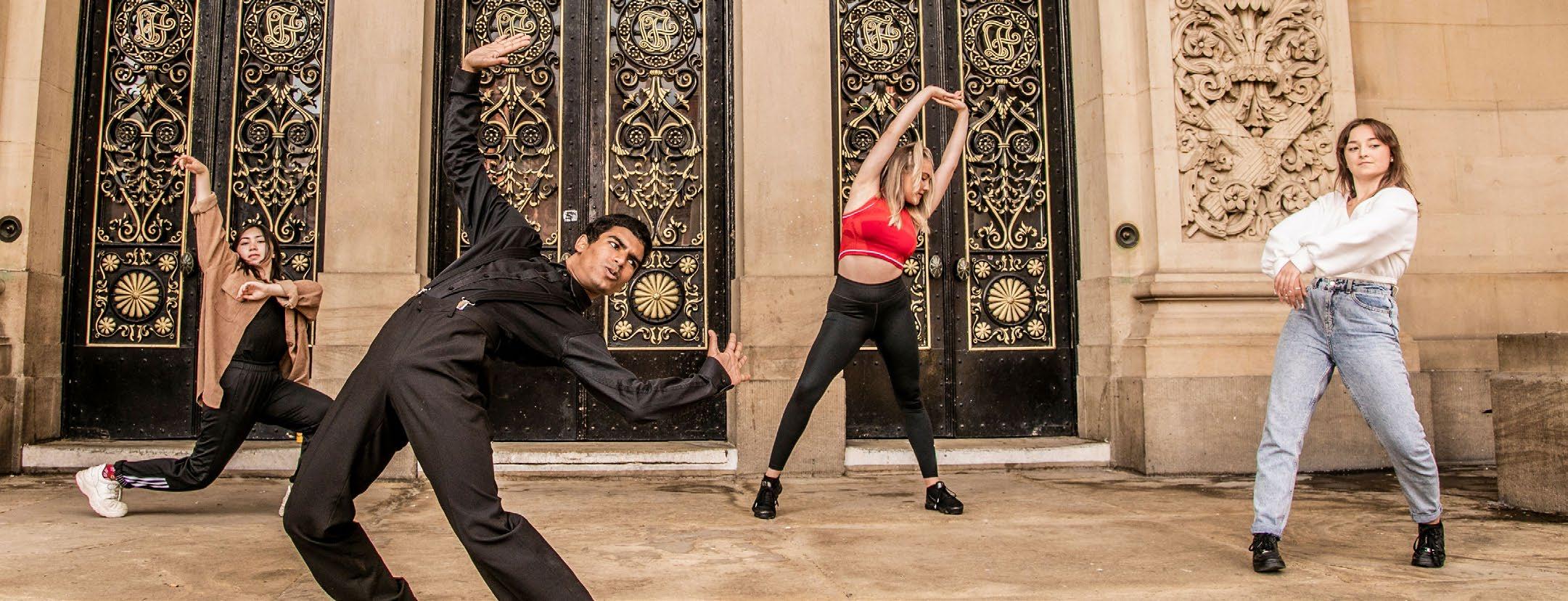
6 minute read
Creating Safer Cultures for 16-24 Year Olds
Between 16 -24, young people make the transition from childhood to adulthood and seek to understand who they are and where they belong in society. Young people also mature at different rates based on life experiences and exposure to external influences.
This can be a very exciting time, but it can also be difficult to fully comprehend the complex pressures that young people can face. Hear from two industry leaders, Cath Sykes and Tracy Witney, on recommendations and best practice.

One Dance UK Young Creatives participants
Photo: Dani Bower for One Dance UK
Cath Sykes from the Ann Craft Trust discusses some ways we can help young people navigate this tricky yet exciting period in their lives by walking in their shoes, talking, and listening.

Cath Sykes
Get to know young people and find out what makes them tick
Ask open questions about their interests, views and approach to life. You can do this individually and in groups. And if you don’t know what young people are talking about, ask!
Learn about the pressures that young people face and be prepared to talk about them
Here are just some of the pressures young people might face at this age:
• Finding a job
• Leaving home and becoming financially independent
• Relationships
• Peer pressure
• Self-image and identity.
Fear of failure can make any of these issues even more complex. Some young people may also be facing additional responsibilities such as looking after dependants or relatives, or managing their own additional care needs.
Additionally, according to the Office of National Statistics: Coronavirus and the social impacts on young people in Great Britain 3 April – 10 May 2020, for people aged 16 to 29, the main concerns about the lockdown included the effect on schools or universities (24%), their well-being (22%), work (16%) and household finances (16%).
The affects of the pandemic will continue to impact on young people for a number of years to come.
Create an environment where people feel they will be listened to
All of us may have concerns or worries that we want to share, so it’s important to provide opportunities to open up and share. Having the systems in place to follow this up will ensure that everyone gets the support they need. The Ann Craft Trust has developed resources to help you start the conversation.
Have appropriate policies, procedures and resources to hand
Develop policies that are relevant to your target audience. The legislation for safeguarding adults is different to the legislation for safeguarding children. Take the time to understand what is required so that you can build up your support network.
Have clear codes of conduct and expectations in place for everyone
These codes should apply to dancers, volunteers, teachers, and staff and need to be embedded across your organisation. Collaborate to develop codes of conduct and write them in a language that everyone understands. That way, people will be more likely to follow them.
Set expectations and boundaries defining acceptable behaviour and feed these ideas into your code of conduct to remove confusion and awkwardness of deciding whether something is OK or not.
Development and Training
Offer opportunities for young people to take on a role that will help them on their career path.
Have a safe recruitment process for both external and internal applicants including an application process, a DBS check (if required), at least 2 references and an interview.
Following this, have an induction process that explains responsibilities for participants, volunteers, and staff. This can also include discussions around safe social media use. Finally, enforce personal boundaries to protect both volunteers and participants from misunderstandings and potential allegations.
Continue to learn and develop
Keep your safeguarding knowledge and skills up to date. The Ann Craft Trust has regular courses and newsletters to support you. Events: www.anncrafttrust.org/events
Sign up for newsletters and updates: www.anncrafttrust.org/contact
Finally, sign up to the #saferculturesafersport campaign to make your commitment to creating safer cultures in sport, and to keep up to date with news and resources.
Further Information
www.anncrafttrust.org/saferculture


Chinyanta Kabaso
Photo: Dani Bower for One Dance UK
Tracy Witney is Chair of the National Centres for Advanced Training in Dance (CAT) Programme and Head of Learning and Participation/ Designated Safeguarding and Prevent Lead at Northern School of Contemporary Dance. She shares the approach of the CAT schemes when developing safe environments for young dancers to flourish.

Tracy Witney
Photo: David Elliott
The National Centres for Advanced Training (CATs) in dance work together to promote the highest standards of safety and welfare for young dancers accessing our provision. As host organisations we strive to create nurturing and safe environments that support the physical, mental and emotional wellbeing of our students.
Over the last 18 years the CAT programmes have developed and refined their safeguarding working practices to cover children, young people and adults at risk. We take into consideration a multitude of factors surrounding the prevocational training programme, including but not limited to:
• Diverse backgrounds of our students (gender, ethnicity, disability, neurodiversity, socio economic status)
• The intensity of dance activity involved in the programme
• Commitment factors within their academic school Safe dance practice and safeguarding is the responsibility of everyone involved in the CATs.
Guided by tutors and safeguarding leads, our young dancers are encouraged to be proactive in understanding and recognising the importance of consent, and how and when to provide it – whether it be a photograph on a website or the use of safe touch.
Each host centre works with their own safeguarding policies and procedures, including safer recruitment of artists and assigned safeguarding leads.
Tracy Witney
Further Information
www.nationaldancecats.co.uk






